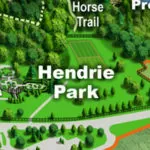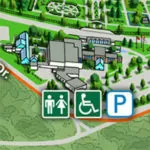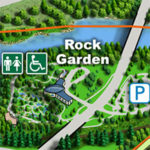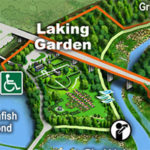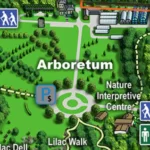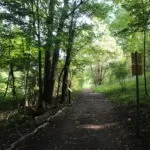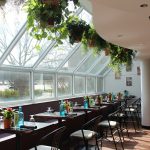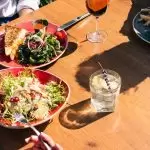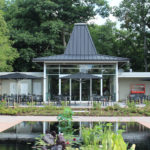| Membership | Price (+HST) |
|---|---|
| Single | $85/year |
| Single Plus | $120/year |
| Family | $130/year |
| Family Plus | $175/year |
| Contributing | $300/year |
| Supporting | $600/year |
| Sustaining | $1,000/year |
| Benefactor's Circle | $2,500/year |
| Director's Circle | $5,000/year |
| President's Circle | $10,000/year |
Hendrie Park
Our largest cultivated garden area, Hendrie Park has something for everyone. This garden truly illustrates the diversity of both plants and garden design.
Key Attractions
- Rose Garden
- 12 themed garden areas
- Dan Lawrie International Sculpture Collection
- Hendrie Park Gates
Garden Facts
- Showcases 1,430 types and 55,371 individual plants
- 9 hectares (22 acres)
- Backs onto the Hendrie Valley Nature Sanctuary
Dining
- Turner Pavilion Tea House
- Greenhouse Café (inside RBG Centre)
Visiting Hendrie Park
Admission
- Garden Admission or Membership Applies
Parking
Parking is available across the street at RBG Centre, 680 Plains Road W.
Getting to Hendrie Park
Enter through the main doors of RBG Centre, where a tunnel is available under Plains Road to Hendrie Park.
- 680 Plains Rd. W. Burlington Ontario
- Bus stops accessed by Burlington Transit
Hendrie Park Hours
Hours reflect garden admission availability at Hendrie Park, and may differ by garden area. Ticketed events and programming may fall outside these hours.
Today’s Hours
Seasonal Hours
- 10 a.m. to 5 p.m. (final entry 4 p.m.) (Sep 3 to Dec 4)
- Wed to Sun: 11 a.m. to 4 p.m., Mon & Tues: 10 a.m. to 5 p.m. (Dec 5 to Jan 5)
Exceptions
- Dec 23 10 a.m. to 4 p.m. (final entry 3 p.m.)
- Dec 24 New Years Eve: 10 a.m. to 3 p.m., last admission 2 p.m.
- Dec 25 Christmas Day: Closed
- Dec 26 Boxing Day: Closed
- Dec 30 10 a.m. to 4 p.m. (final entry 3 p.m.)
- Dec 31 New Years Eve: 10 a.m. to 3 p.m., last admission 2 p.m.
- Jan 1 New Year's Day: Closed
Collections & Areas of Interest
- Rose Garden
- Morrison Woodland Garden
- Helen M. Kippax Garden
- Lily Collection
- Veggie Village
- Hendrie Gates
- Scented Garden
- Canadian Tree Introductions
- Global Garden
- Imagination Grove
- White Garden
- Healing Garden
- Prehistoric Grove
- Cherry Hill Tent
- Rose Garden Tent
- Grindstone Marshes Trail
- Tunnel to/from RBG Centre to/from Hendrie Park
Rose Garden
Peak Interest: June to October
The new Rose Garden features a spectacular display of roses and companion plants intended to extend seasonal interest and keep diseases at bay. Our focus is on disease resistant, disease-tolerant and cold-hardy roses, including Canadian introductions. We’re excited to present an innovative, sustainable and inspiring experience, the quintessential rose garden for Canada’s largest botanical garden.
The Healing Garden
Explore the connections between people and healing plants from around the world, from traditional remedies to leading-edge drugs in the Healing Garden. Our collection of medicinal plants has undergone a full metamorphosis, and the space has been reconfigured and enlarged, expanding display room.
Discover how plants heal us and give life through this in-depth look into each plant’s role in supporting wellness and understand why 80% of the world’s medicines have their ‘roots’ in plants. Each of the 12 garden beds focuses on different plants that are used to treat ailments in specific bodily systems. Learn about the healing power of plants from head to toe!
Medieval Garden
Peak interest: April to October
This garden features plants of ethnobotanical value used in medieval times for medicinal, culinary, aromatic and dye purposes. These plants predate the many modern synthetic products we use today and were essential to survival in medieval times. The medieval garden is truly a garden of sustainability and human resilience.
This garden features an analemmatic sundial (the visitor becomes the gnomon and casts the shadow).
The sundial was designed and built with assistance of Dr. Paul Lapp.
Morrison Woodland Garden
Peak interest: all year
Life on the forest floor is a challenge. Intense spring sun is followed by deep summer shade. Around the temperate world, Europe, Japan, and here in southern Ontario, plants adapt in similar ways. Many forest species compress their peak growth and bloom into the short period after spring thaw and before tree leaves block the sun. Later, only shade-tolerant plants (those that can photosynthesize in low light) will thrive.
Never take your native woodlanders for granted. Plants such as Trillium are highly desirable and sought- after plants in places beyond Canada. Sometimes plants such as these become so coveted that plant collectors take them from wild, seriously reducing and threatening native plant populations. Knowing the origin of the plants you buy for your garden is very important.
To extend the seasonal interest of this garden, other shade-tolerant plants from the world’s temperate forests are included to display the diversity of plants adapted to shade conditions.
A memorial donation by the family of Hamilton physician and surgeon Dr. Roy Edward Morrison assists in the development and maintenance of this garden.
Helen M. Kippax Garden
Peak interest: all year
Bounded on three sides by the natural lands of the Grindstone Creek Valley, this garden features native trees, shrubs, perennials and grasses along with their cultivars to add extra colour. Over 135 native species are displayed in plant community zones that represent several local habitats including prairie, oak savannah, Carolinian forest and wetland pond.
The Helen M. Kippax Wild Plant Garden was opened in 2008 thanks to the generosity of Mary Stedman and her late sisters Margaret and Ruth to celebrate their aunt, Helen M. Kippax, one of the founding members of the Canadian Society for Landscape Architecture. The garden was designed to display how native plants bring beauty, ecological function, biodiversity and sustainability to gardens. In the context of this garden, Royal Botanical Gardens defines a native species as one that was present in Ontario prior to the arrival of European colonists in the 18th century.
The garden was originally designed by Martin Wade Landscape Architects in consultation with native plant gardening advocate and author, Lorraine Johnson.
Lily Walk
Peak interest: June to August
The lily display integrates the collection with a display of popular perennials, giving this garden area season long interest. The collection is laid out to reflect the diversity and divisions of the Lilium genus in accordance with the Royal Horticultural Society in the U.K. Within each division you will discover how the efforts of plant breeders have resulted in various breeding trends, improving the resilience and vigor of garden lilies.
Veggie Village
Peak interest: June to October
Veggie Village is a display garden showcasing the many ways in which you can grow vegetables at home. The garden consists of nine vegetable demonstration plots as well as an interpretive zone where visitors can learn why and how we should all be eating and growing our own local produce.
Hendrie Gates
Peak interest: all year
Surrounding the South end of Scented Garden, the Hendrie Park Gates were constructed in recognition of the Hendrie family, who previously owned the lands on which the garden now sits. The gates are a favourite of visitors looking for an iconic spot for a photo op.
Scented Garden
Peak interest: April to October
An avenue of Chinese Flowering Dogwood (Cornus kousa) leads you to the Scented Garden, with its traditional stone walls, gravel paths, boxwood edging, and cooling central fountain.
Plant scents can be penetrating or elusive and subtle but touch our lives in many ways. They not only arouse our memory—lilacs are the essence of spring, and fresh-mown hay means the height of summer—but we have long used plants to add fragrance to ourselves and our homes.
Scented plants are often used commercially in the production of perfumes and fragrances. The fragrance produced by some plants is extremely complex. Take lilacs for example. The fragrance is made up of 185 different compounds. As a result, essential oils from lilac flowers are too intricate to reproduce so lilac perfume in cosmetics is derived from extracts of non-related flowers.
The scents and fragrances produced by plants aren’t just for our pleasure alone. Some plants rely on wind or gravity for pollination, but many rely on scent. The fragrance of the flower alerts pollinators such as insects, bats and hummingbirds that the plant is ready to be pollinated. When the animals arrive to collect pollen or nectar the pollen gets transferred. As a result, plants and pollinators often display a long history of mutual evolution.
The Scented Garden explores the range of scents through annuals, perennials and shrubs that produce scented flowers as well as scented, “scratch and sniff” leaves.
Global Garden
Peak interest: Summer
Each region of the world has useful plants deeply rooted in its culture. Plants native to the Pan American region sustained cultures and civilizations for millennia, but after colonization, many were introduced to Europe. As they were assimilated into the Old World, these plants changed cultures and economies, and drove the first wave of globalization. This garden compares and contrasts the useful plants of the Old and New Worlds, reinforcing the message that our lives depend upon a whole world of plants.
White Garden
Peak interest: summer to early fall
The White Garden celebrates plants…in monochrome! This garden features plants with white flowers, berries, foliage or bark. The central grass area provides a tranquil venue for relaxing, enjoying the beauty around you and if you time it right, listening to live music in the garden.
Trials Garden
Each summer we partner with University of Guelph to trial (“try out”) new cultivated varieties of annuals. The Plant Agriculture Department receives seed from plant breeders and produces seedlings which are distributed to several sites across southern Ontario. These are planted and as they grow and are evaluated to see how they perform in our climate and soils.
Prehistoric Grove
Go back in time with this planting of living fossils. This grove features plants that were once thought to be extinct but have since been re-discovered and brought into cultivation. This planting showcases Metasequoia (Dawn Redwood), Ginkgo (Ginkgo) and Sciadopitys (Japanese Umbrella-pine) species and their cultivars.
Turner Pavilion Tea House
Open seasonally
Surrounded by the ever-changing blooms of Hendrie Park, the tea house offers the ideal spot to relax in nature’s tranquility while enjoying afternoon tea or lunch.
Dan Lawrie International Sculpture Collection
In 2013 Dan Lawrie, Hamilton businessman and Burlington resident, made a 10-year commitment to donating sculpture to Royal Botanical Gardens which has created The International Sculpture Collection.
Through Dan’s generosity, this permanent collection grows in Hendrie Park each year, with the addition of new works from around the world.
What’s in Bloom & Plants of Interest in Hendrie Park
March
- Spring Ephemerals
April
- Redbud
- Magnolia*
- Spring Ephemerals
May
- Redbud*
- Magnolia*
- Dogwood
- Spring Ephemerals
- Coral Bells
- Hydrangea
- Sunflower Family
Bloom times can vary from year to year as they are influenced by many natural events including temperature and climate. Please bear in mind that if we experience an early or late spring, bloom times could shift up to 10 days earlier or 10 days later.
*These plants have short bloom times and are very weather dependent. Check our social media feeds closer to bloom time for updates.
June
- Dogwood
- Coral Bells
- Hydrangea
- Rose
- Sunflower Family
- Veggie Village
- Coral Bells
- Annuals
July
- Rose (peak)
- Lily
- Coneflower
- Water Lilies
- Hydrangea
- Sunflower Family
- Veggie Village
- Lotus
- Coral Bells
- Rose Garden Companion Plants
- Annuals
August
- Rose
- Coneflower
- Sunflower Family
- Water Lilies
- Veggie Village
- Lotus
- Hydrangea
- Coral Bells
- Rose Garden Companion Plants
- Annuals
Bloom times can vary from year to year as they are influenced by many natural events including temperature and climate. Please bear in mind that if we experience an early or late spring, bloom times could shift up to 10 days earlier or 10 days later.
*These plants have short bloom times and are very weather dependent. Check our social media feeds closer to bloom time for updates.
September
- Sunflower Family
- Veggie Village
- Coneflower
- Coral Bells
- Hydrangea
- Rose Garden Companion Plants
- Pre-Historic Grove
October
- Fall Colours
- Sunflower Family
- Coral Bells
- Veggie Village
- Rose Garden Companion Plants
- Pre-Historic Grove
November
- Fall Colours
- Sunflower Family
- Rose Garden Companion Plants
- Heritage Trees
Bloom times can vary from year to year as they are influenced by many natural events including temperature and climate. Please bear in mind that if we experience an early or late spring, bloom times could shift up to 10 days earlier or 10 days later.
*These plants have short bloom times and are very weather dependent. Check our social media feeds closer to bloom time for updates.
December
- Heritage Trees
- Winter Interest Plants
- Fruit-Producing Shrubs
January
- Heritage Trees
- Winter Interest Plants
- Fruit-Producing Shrubs
February
- Heritage Trees
- Winter Interest Plants
- Fruit-Producing Shrubs
Upcoming Events, Activities & Tours at Hendrie Park
Some events may require pre-registration, and may not be covered by your garden admission. For a full listing of events across all RBG’s gardens, visit the Events Calendar.
History of Hendrie Park
In 1931, a 122-acre (49 ha) parcel of the Hendrie Valley Farm was given to the City of Hamilton by George M. Hendrie. George Hendrie donated property to the Hamilton Parks Board in memory of William and his brothers; ten years later it became part of the newly formed RBG. The Hendrie family were founders of the Ontario Jockey Club and made their wealth in railway development. Their horse farm occupied the uplands around Hendrie Valley.
Garden FAQ
Directions / Parking
Please enter through the main doors of RBG Centre (680 Plains Road W. Burlington ON, parking on-site), where a tunnel is available under Plains Road to Hendrie Park.
PLEASE NOTE: though a parking lot does exist by the Cherry Hill Trailhead (beside Hendrie Park), this lot is dedicated for trail use and access to Hendrie Park NOT available.
Admission
Access to Hendrie Park during regular operating hours is included in your Garden Admission (payable when you arrive at RBG Centre or pre-purchased online) or with your Membership.
Garden Admission also includes access to all the cultivated garden areas for the day, including: Hendrie Park, RBG Centre, Laking Garden (available seasonally), and Rock Garden.
Special events or exhibits at this location require separate tickets.
How Far is Hendrie Park from RBG’s Other Garden Areas?
- Hendrie Park to Laking Garden: 1 km / 0.6 miles
- Hendrie Park to Rock Garden: 1.6 km / 1 mile
- Hendrie Park to the Arboretum: 3.3 km / 2 miles (walking not recommended. Old Guelph Road does not include sidewalks)
Walking from garden to garden is possible, but please be aware that our property is spread out over 1,100 hectares of gardens and nature sanctuaries. Please consider driving or biking between locations, or using the shuttle service when available (weekends, spring to mid-summer).
Are there Washroom Facilities Available?
Small washrooms are available just outside the Turner Pavilion Tea House, and in RBG Centre on the lowest floor of the Atrium (at the base of the stairs, before you go through the tunnel into Hendrie Park.
Are water fountains / bottle filling stations available?
Water Fountains and bottle filling stations are available at all RBG garden areas.
In Hendrie Park, an outdoor bottle refill station is available outside the Turner Pavilion Teahouse. In RBG Centre (which guests enter through to gain access to Hendrie Park), you can find a fountain available near the Auditorium, and water bottle stations available just outside the main doors or indoors by the Greenhouse Café.
Forget your bottle at home? Shop at the Gardens has bottles available for purchase!
Food and Drink / Picnics
The Tea House in Hendrie Park is open for lunch, afternoon tea, and sweet treats. Reservations recommended.
The Greenhouse Café located inside RBG Centre offers a fast-casual menu to take away or sit down and enjoy your meal.
Outside food is not permitted at RBG Centre, Hendrie Park, or Rock Garden. Outside food is only permitted at Laking Garden and the Arboretum (excluding special events). Please pack-out or properly dispose of any waste. Outdoor cooking is not permitted in any of RBG’s garden areas.
Is the Garden Accessible?
All garden paths indicated on the garden map are either paved, or made of finely packed gravel, suitable for wheelchairs and walkers meant for outdoor use. Areas with stairs can be accessed by travelling around that garden area to where sloped paths are available.
Can I Bring My Dog?
Leashed pets are permitted in Hendrie Park for a visit during regular operating hours. Please be responsible and clean up after your pet.
With the exception of service animals, leashed pets are only permitted to enter RBG Centre to access Hendrie Park and are not allowed in indoor spaces, such as the Mediterranean Garden, Garden Shop, or Greenhouse Café.
With the exception of service animals, pets are not permitted at special events.
Thank you for your understanding.

